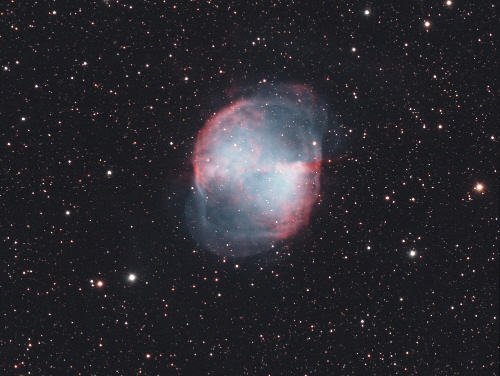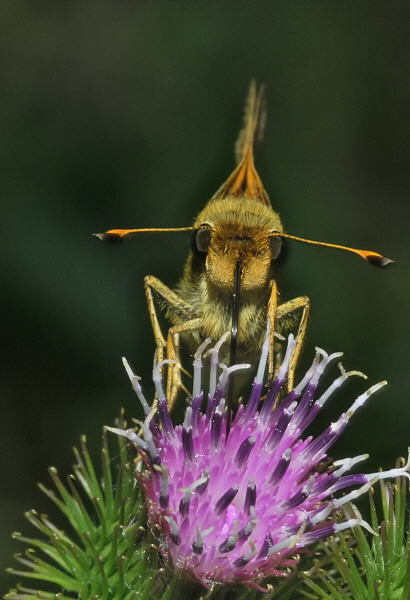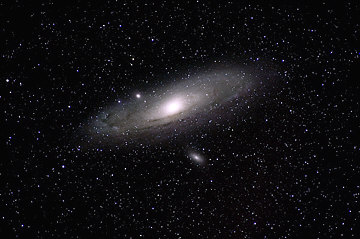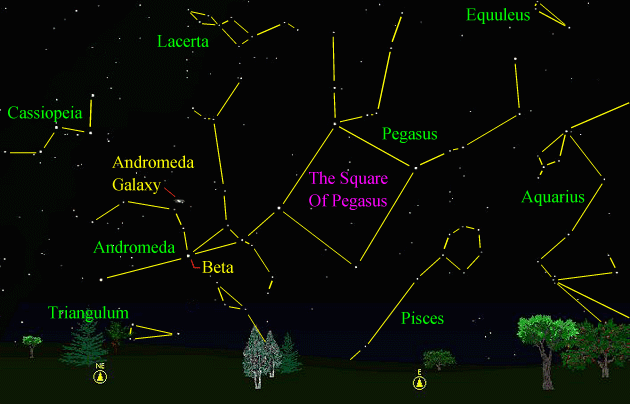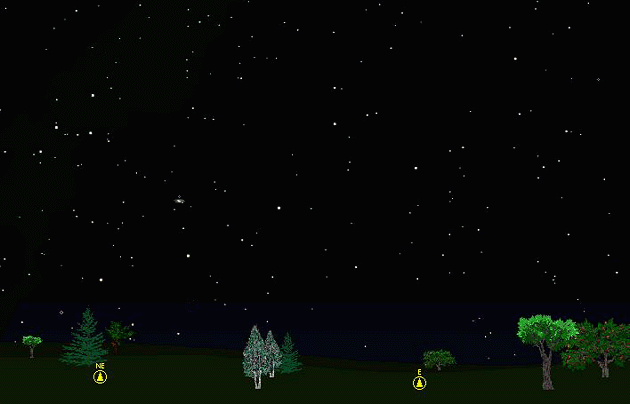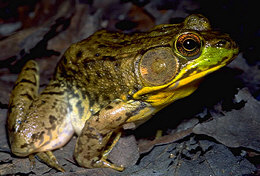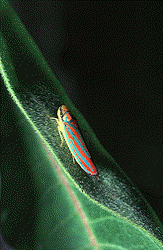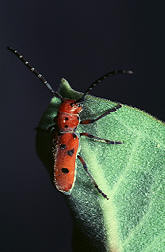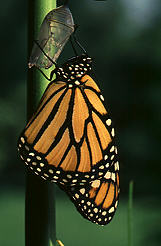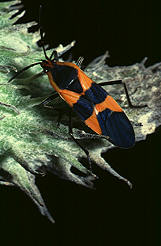The purpose of this feature is to give scout leaders, educators and naturalists an idea of some of the natural events coming up each month. We will try to cover a variety of natural events ranging from sky events to calling periods of amphibians, bird and mammal watching tips, prominent wildflowers and anything else that comes to mind. We will also note prominent constellations appearing over the eastern horizon at mid-evening each month for our area for those who would like to learn the constellations. If you have suggestions for other types of natural information you would like to see added to this calendar, let us know! Note: You can click on the hyperlinks to learn more about some of the featured items. To return to the Calendar, hit the "back" button on your browser, NOT the "back" button on the web page. All charts are available in a "printer friendly" mode, with black stars on a white background. Left clicking on each chart will take you to a printable black and white image.
Notes and Images From July 2008 Like an interstellar jellyfish, Messier 27 floats amid the stars of the summer Milky Way. Charles Messier came across this planetary nebula on July 12th, 1764, "between the two forepaws" of Vulpecula, the Fox. We took this image on July 1st and July 2nd, after a cold front had swept some of the summer haze away. Many stars, after depleting their supply of hydrogen, will expand to become red giants. After spending some time in the red giant phase, some of these stars will cast off their outer layers, which form a shell of gas that surrounds the remnants of the central star. This shell of gas is called a planetary nebula. Planetary nebulae are so named because early astronomers thought they resembled dim planets like Uranus - visually many look round and greenish. In the image above, the red colors come from fluorescing hydrogen while the blue-green colors come from doubly ionized oxygen. Over ninety-five percent of all of the stars in our galaxy, including our own sun, will end their lives in this fashion. The dwarf central star, whose initial surface temperature is as hot as 150,000 degrees Kelvin, will slowly cool to a dark cinder. However, the gas clouds the star casts off are rich in carbon, nitrogen and oxygen. These elements, so important to life on the earth, were left to us by stars in the final stages of their lives. Click the image above for a larger, high-resolution version and a finder chart for binoculars.
We came across this Sachem Skipper on a Burdock flower in Franklin County. These butterflies frequent disturbed, open areas such as pastures, meadows, roadsides, parks and lawns. It is a common butterfly in our area. Adults feed on the nectar from many flowers including swamp and common milkweeds, buttonbush, dogbane, peppermint, red clover, thistles, marigolds and asters. The caterpillars feed on grasses. The word Sachem is derived from an Algonquian word "Sakimaw" and refers to the head of a Native American tribe. The Sachem Skipper is one of three species of skippers known collectively as the "three wizards." The other two species are the Fiery Skipper and the Whirlabout. For more about butterflies, including a full image sequence of a Monarch caterpillar forming a chrysalis and then emerging as a butterfly, see the section on insects below.
Sky Events for August 2008: Evening Sky: At the beginning of August Mars, Saturn and Venus can be seen in the evening sky after sunset. Venus is the brightest, and the closest to the horizon, of the three. Look just above the western horizon 20 to 30 minutes after sunset. The waxing crescent Moon will be beneath them on August 3rd. Mercury joins the group during the 2nd week of the month, but you will probably need binoculars to pick it out. For the latter half of the month, Mercury and Venus stay within 3 degrees of each other. Jupiter shines brightly in the southeast at dusk, outshining every other star-like object in the southern sky. Use binoculars to watch the four "Galilean" moons change position each night. Steadying the binoculars against a solid object will allow you to see them better. Any small telescope will give you an interesting view. Morning Sky: The Perseid Meteor Shower peaks in the morning hours of August 12th. The waxing gibbous Moon will brighten the sky until 1:45am, but conditions should improve after that. All times noted in the Sky Events are for Franklin, Tennessee and are Central Daylight Time. These times should be pretty close anywhere in the mid-state area. Constellations: The views below show the sky looking east at 10:15pm CDT on August 7th. The first view shows the sky with the constellations outlined and names depicted. Star and planet names are in yellow. Constellation names are in green. The second view shows the same scene without labels. New constellations this months are Pegasus, the Flying Horse, Andromeda, Princess Andromeda, Triangulum, the Triangle, Pisces, the Fishes, and Aquarius, the Water Bearer.
Find the "Square of Pegasus" and work your way outward from it to the constellations around it. Look above beta Andromedae (see the chart below) and see if you can pick out the faint glow of the Andromeda Galaxy, over 2 million light years away! When you look at this galaxy you're seeing light that began its journey to us in the Pleistocene epoch. To get the best look, wait until the galaxy climbs high in the sky. The Andromeda Galaxy was first shown on star charts prepared in 905AD by the Persian astronomer, Al Sufi, and was referred to as the "Little Cloud." That well describes its appearance to the naked eye, and in dark skies it's not hard to spot. City dwellers may need binoculars to pick it out. Simon Marius, in 1610, was among the first to observe the Andromeda Galaxy through a small telescope. He compared its soft glow to "the light of a candle shining through horn." In dark skies, those using small telescopes may pick out the small satellite galaxies M32 (above and left of the nucleus of M31 in the above image) and NGC 205 (below).
On Learning the Constellations: We advise learning a few constellations each month, and then following them through the seasons. Once you associate a particular constellation coming over the eastern horizon at a certain time of year, you may start thinking about it like an old friend, looking forward to its arrival each season. The stars in the evening scene above, for instance, will always be in the same place relative to the horizon at the same time and date each August. Of course, the planets do move slowly through the constellations, but with practice you will learn to identify them from their appearance. In particular, learn the brightest stars for they will guide you to the fainter stars. Once you can locate the more prominent constellations, you can "branch out" to other constellations around them. It may take you a little while to get a sense of scale, to translate what you see on the computer screen or what you see on the page of a book to what you see in the sky. Look for patterns, like the stars that make up the "Square of Pegasus." The earth's rotation causes the constellations to appear to
move across the sky just as the sun and the moon appear to do. If you go
outside earlier than the time shown on the charts, the constellations will be
lower to the eastern horizon. If you observe later, they will have climbed
higher. As each season progresses, the earth's motion around the sun
causes the constellations to appear a little farther towards the west each
night for any given time of night. If you want to see where the
constellations in the above figures will be on September 7th at 10:15pm CDT, you
can stay up till 12:15pm CDT on August 7th and get a preview. The westward
motion of the constellations is equivalent to two hours per month. Sky Publishing has just come out with a beautiful and compact star atlas, Sky & Telescope's Pocket Star Atlas. It is destined to become a classic, and is a joy to use at the telescope. A good book to learn the constellations is Patterns in the Sky, by Hewitt-White. You may also want to check out at H. A. Rey's classic, The Stars, A New Way to See Them. For skywatching tips, an inexpensive good guide is Secrets of Stargazing, by Becky Ramotowski. A good general reference book on astronomy is the Peterson
Field Guide,
A Field Guide to the Stars and Planets, by Pasachoff.
The book retails for around $14.00. Starry Night has several software programs for learning the night sky. Visit the Starry Night web site at www.starrynight.com for details.
Amphibians:
Listen for Cope's Gray Treefrogs, Gray Treefrogs, Bird-Voiced Treefrogs, Green Treefrogs and Barking Treefrogs. Northern Cricket Frogs and Southern Cricket Frogs are still calling, as are American Bullfrogs and Green Frogs. Spring Peepers have a much higher, shorter call this time of year. On cooler nights listen for American Toads. After heavy rains listen for the high, insect-like call of the Eastern Narrow-mouthed Toad and the strange-sounding Eastern Spadefoot.
Insects: Late summer is the time of the great insect orchestras. Cicadas are
heard during the day and
at dusk, and True Katydids evoke memories of past summer evenings with their familiar
music. Fork-tailed Bush Katydids deliver a short upward-slurred note with
an inflection that sounds like a match being struck. Robust Coneheads play
their long monotone rasps, the pitch Doppler-shifting downward as you drive by
them in the dark. Fireflies mirror the starry sky overhead. By day, some of the more colorful insects can
be found in patches of milkweed.
Monarch butterflies lay their tiny cream-colored
eggs on the milkweed leaves
and you can usually find a Monarch caterpillar munching on the foliage. If you’re lucky, you might even find the
beautiful, jewel-like chrysalis of the Monarch nearby. To see a complete image sequence of a Monarch caterpillar forming it's chrysalis
and emerging as a butterfly,
click
here. Scarlet and Green Leafhoppers, Large
Milkweed Bugs and Red Milkweed Beetles all add their brilliant warning colors
to the scene.
To learn more about insect songs we recommend: The Songs of Insects, by Lang Elliott & Will Hershberger (Houghton Mifflin) - Beautifully written and including many spectacular images, this book includes an audio CD and detailed range maps. It was a real bargain for $19.95, and you can now get it from Amazon for less than $14.00.
Archives (Remember to use the back button on your browser, NOT the back button on the web page!) Natural Calendar February 2008 Natural Calendar December 2007 Natural Calendar November 2007 Natural Calendar September 2007 Natural Calendar February 2007 Natural Calendar December 2006 Natural Calendar November 2006 Natural Calendar September 2006 Natural Calendar February 2006
Natural Calendar
December 2005
Natural Calendar
November 2005
Natural Calendar
September 2005
Natural Calendar
February 2005
Natural Calendar
December 2004
Natural Calendar
November 2004
Natural Calendar
September 2004
Natural Calendar
February 2004
Natural Calendar
December 2003
Natural Calendar
November 2003
Natural Calendar
September 2003 Natural Calendar February 2003 Natural Calendar December 2002 Natural Calendar November 2002 Nature Notes Archives: Nature Notes was a page we published in 2001 and 2002 containing our observations about everything from the northern lights display of November 2001 to frog and salamander egg masses. Night scenes prepared with Starry Night Pro software All images and recordings © 2008 Leaps |
